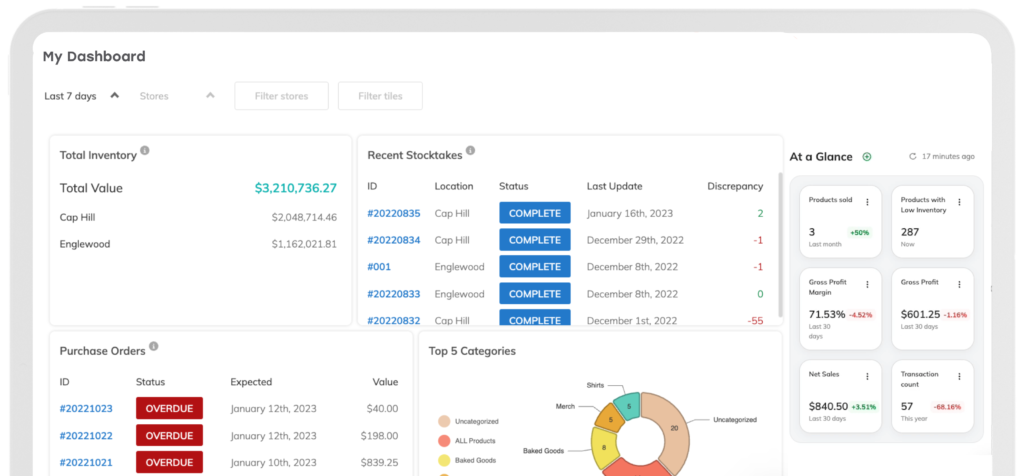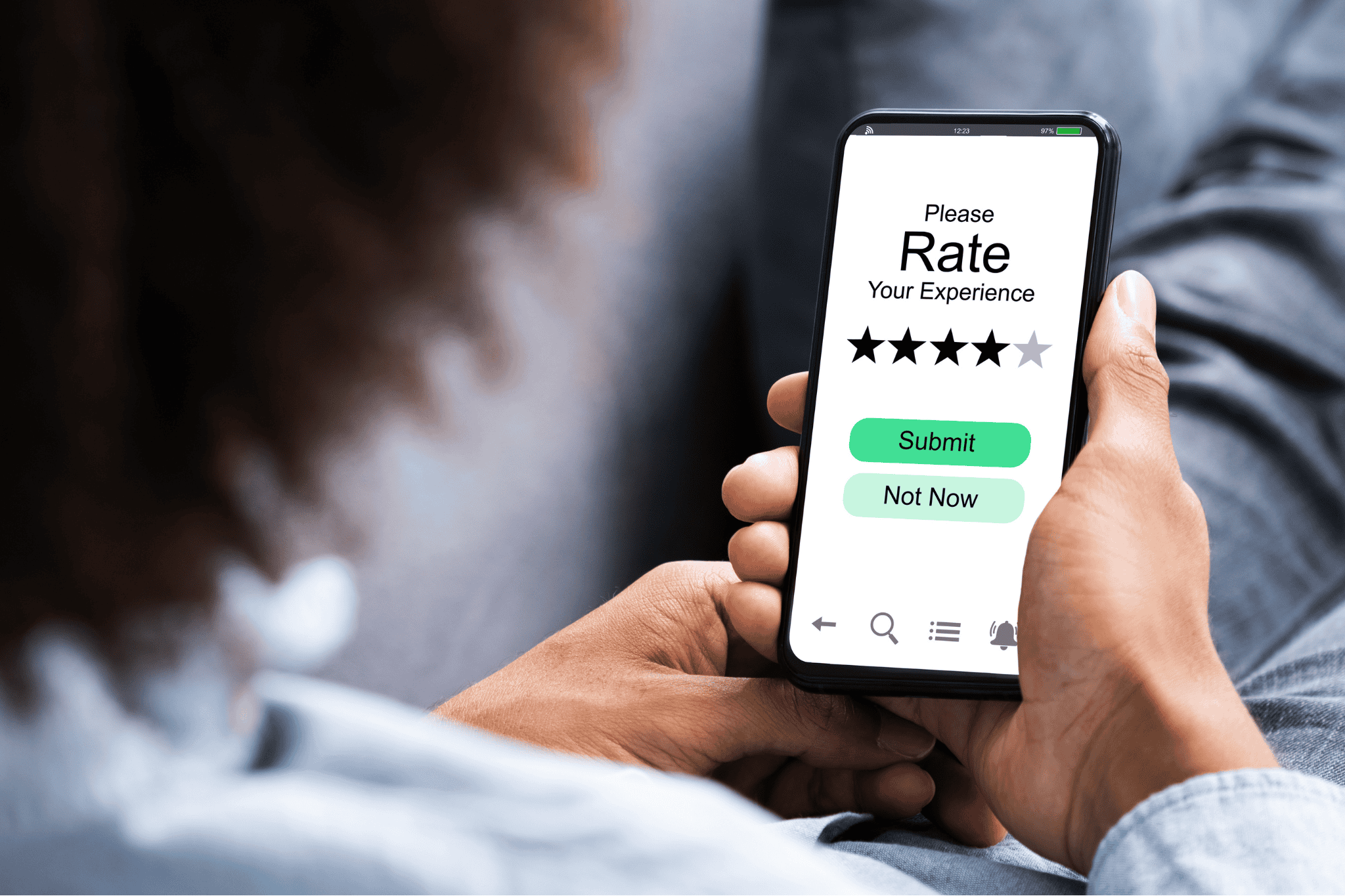
Turn One-Time Shoppers Into Loyal Customers: 10 Proven Strategies
Building a base of loyal, returning customers is essential to sustainable growth for your small business. Strong retention means more reliable revenue, increased shopper lifetime value, and a brand that people trust. A strong small business customer retention strategy is key to keeping folks coming back whenever they need to buy skincare, get a cup of coffee, or find a unique gift for a loved one.
Read on to discover customer retention strategies for small businesses that work for both brick-and-mortar stores and e-commerce brands.
What You'll Learn In This Blog
- Why repeat customers are key for long-term growth?
- 10 customer retention strategies
- 1. Reward loyalty with compelling programs
- 2. Offer subscription options
- 3. Deliver personalized and memorable service
- 4. Use targeted email campaigns
- 5. Make reordering quick and effortless
- 6. Invest in the in-store experience
- 7. Be proactive when it comes to customer support
- 8. Provide post-purchase services
- 9. Align your brand with meaningful causes
- 10. Reconnect with lapsed customers strategically
Why Repeat Customers Are Key For Long-Term Growth?
Customer retention is more cost-effective
Acquiring new customers is at least five times more expensive than retaining an existing one.
Once a shopper makes a purchase, your brand has already passed several crucial barriers. They heard about your company and elected to trust you with their business, which is the hardest part of customer acquisition. Now that they’ve crossed that line from onlooker to buyer, you’ll focus more on building a relationship with that person than persuading them to walk through your doors (or click on your shop).
Loyalty drives long-term revenue
Customer Lifetime Value (CLTV or LTV) is one of the most important metrics for any business. It measures how much revenue a customer generates throughout their relationship with your brand. To calculate LTV, use the following formula:
Customer Lifetime Value (LTV) = (Average Revenue Per User x Gross Margin) / Churn Rate
Power Up
Customer Lifetime Value is an important KPI to track. Learn about seven more formulas that determine the health of our business.
The longer a customer stays loyal, the higher their LTV. That means more stability for your business. Repeat customers:
- Make more frequent purchases
- Spend more per transaction
Repeat customers are familiar with your brand, know what to expect, and are less price-sensitive because they see value beyond just the product or service. In fact, 91% of shoppers say they will buy more often when they trust a company.

Repeat buyers promote your brand organically
One of the biggest perks of a loyal customer base is that they perform your marketing efforts for you. Some essentially become brand ambassadors, sharing information about your products and services without any incentive to do so aside from how much they genuinely enjoy shopping with you. Satisfied customers:
- Refer friends and family to your business
- Leave positive reviews and testimonials
- Post unboxing videos or product photos on social media, called user-generated content (UGC)
- Tag your business on social media
- Engage with your brand online via email and social
People trust their peers more than they trust ads. This kind of word-of-mouth marketing is powerful, cost-effective, and most importantly to people on the fence about you, authentic.
Existing customers are more likely to try new products
If you’re introducing a new product or service, it’s much easier to sell to someone who already trusts your brand. The success rate of selling to existing customers is 60% to 70%, but that drops to between 5% and 20% when selling to new customers.
Many successful companies involve repeat customers in product development through surveys, beta testing, and early access programs. This creates a deeper sense of connection and investment in your brand while giving you valuable information from those who are most likely to buy.

10 Customer Retention Strategies That Get You Repeat Buyers
1. Reward loyalty with compelling programs
Loyalty programs reward customers for doing what they are already doing: buying from you. When executed well, these programs create an ongoing incentive for shoppers to stick with your brand instead of jumping to competitors.
Some winning small business loyalty program ideas include:
- Points systems (earn points per dollar spent)
- Tiered rewards program (for example, silver, gold, and platinum levels)
- Punch cards or visit tracking, particularly for brick and mortar stores
- Exclusive early access and other enticing member perks
For best results, make your rewards achievable and desirable. If it takes 10 purchases to earn a free item, the customer should feel it’s worth the effort. Use email, text, or push notifications to remind them of how close they are to earning something.
2. Offer subscription options
Subscription models provide ongoing convenience and reliability, two things that customers value highly. Whether it’s beauty boxes, coffee refills, or vitamin shipments, subscriptions simplify life and make the decision easy when it comes time to buy more from your business.
Subscription services for retail stores create opportunities for reliable recurring revenue, help better predict inventory needs, support a healthy cash flow, and help build stronger long term relationships with shoppers. Make it simple to sign up, manage, pause, or cancel subscriptions. Flexibility reduces friction and increases trust.
Consider a skincare company that offers a monthly delivery of products with the option to customize ingredients based on seasonal needs or skin goals. This shows they value customer needs while growing their bottom line.
Power Up
Learn what it takes to start a subscription model for your small business step-by-step to lock in recurring customer payments.
3. Deliver personalized and memorable service
Customers expect brands to “know” them and personalization helps them feel heard. Three-quarters of U.S. buyers are loyal to companies that understand their individual needs. In both in-person and online stores, personalized experiences make folks feel valued and encourage repeat engagement.
Use tools like customer relationship management (CRM) systems or POS systems to see purchase history and segment shoppers to provide tailored communication and recommendations.
Get inspired by these types of personalized customer service in retail settings:
- Product suggestions based on past purchases
- Birthday or anniversary emails with exclusive offers or a free gift
- Thank-you notes or gifts for milestone spends
- Following up after a purchase to see how the shopper enjoys the product

4. Use targeted email campaigns
Email marketing for customer retention isn’t just for pushing sales. It’s a tool for building lasting relationships. Create emails that shoppers actually want to read; don’t just push sales and new products. Consider the lifecycle of your product: share how-to content, reviews, related products, unique ideas, and feature real customer experiences to shake things up.
Aside from email campaigns being a great tool for personalization, they keep your marketing campaigns organized and targeted. Properly segmented email lists ensure that returning customers don’t get first-time offers.
Successful email campaigns typically involve:
- Newsletters with helpful tips, behind-the-scenes updates, or thought leadership content
- Targeted product recommendations based on behavior or purchase history
- Abandoned cart reminders and win-back sequences
- Exclusive offers for VIPs or long-term customers
5. Make reordering quick and effortless
Repeat purchases should be as easy as tapping a button. Consider offering text reorders, app-based location reminders, or QR codes linking to restock options. Simplified, easy reordering increases the number of repeat buyers who come back to buy from you. Talk about building customer loyalty!
For your e-commerce shop, this means you need as few clicks as possible to reorder. Install a one-click buy again button as one quick way to get customers to buy products again.
6. Invest in the in-store experience
A store is more than just a place to buy stuff — it’s an experience. When faced with increasing e-commerce and declining brick and mortar shopping, brands need to come up with ways to entice shoppers to shop IRL and not from the couch. Creating memorable in-store product experiences is precisely what you need to bring customers out, connecting them with your business all the while. The word-of-mouth payoff is worthwhile, too: shoppers will want to tell their friends about the unique event they got to attend.
Consider the following for building customer loyalty in small businesses:
- Hosting events in-store, like launch parties and community meetups
- Running online events, like live tutorials and Q&A
- Offering workshops or demos
- Building branded environments that encourage social sharing, like selfie stations or living walls
- Curating exclusive sales and pop-ups
- Collaborating with other stores and brands to create a multi-faceted shopping experience
- Running a game night where participants win items you sell (or gift certificates)
- Placing handwritten thank you notes in shopping bags to reinforce just how thankful you are for your shoppers
These efforts create moments customers want to relive and that means consumers will come back.

7. Be proactive when it comes to customer support
Great customer service gets ahead of potential problems by helping shoppers solve issues before they become pain points. Investing in this strategy avoids negative customer feedback while demonstrating to customers that you see them as people, not just as people who spend money with you. More than six out of 10 consumers (62%) are happy to recommend a brand to their friends after receiving exceptional service, so this pays off for word-of-mouth marketing, too.
First, train your staff. Teach them meaningful ways to greet customers, how to ask questions to learn shopper preferences, and ways to recommend products in a way that isn’t pushy or frustrating. Empower employees to handle returns or complaints without unnecessary delays. Even if it isn’t the store’s fault, apologize to show you care about them as a loyal customer. Most importantly, show you will go to the effort to make it right. This all contributes to the positive experiences that shoppers want out of their time with your brand.
Additionally, show customers you care about their business by rewarding them with a discount. Set up triggers to offer discounts for online abandoned carts. Use chatbots or live chat support to answer common questions in real-time so shoppers don’t have to wait and potentially move on to a business that provides answers faster. AI-powered chatbots are a great use of this technology, so shoppers who visit your website get answers easily 24 hours a day.
8. Provide post-purchase services
Post-purchase is where loyalty begins. The goal is to show customers you’re invested in their success and satisfaction — not just the sale. The post-purchase stage revolves around the customer’s thoughts, feelings, and actions after buying your products, and it’s your job to make them feel excited and supported. This valuable customer feedback helps you bring even more shoppers back for more.
Examples of post-purchase customer support in retail:
- Easy returns with no-hassle policies
- Helpful follow-ups
- Inquiring with customers about how they like the product
- Product usage guides or tips
- Requests for reviews or referrals
- Suggestions for complementary items
- Thank shoppers for their first purchase

9. Align your brand with meaningful causes
Customers increasingly prefer to support brands that stand for something. When your business aligns with a clear mission (social, environmental, or community-first) you create deeper loyalty. Nearly two-thirds (66%) of consumers will pay more for products and retail services from companies that demonstrate social responsibility.
Just make sure your mission is authentic and it’s reflected in real action, not just in your marketing materials.
Here are examples of how to give back:
- Donating a portion of profits or a portion of sales to charity
- Supporting local initiatives
- Using sustainable materials or ethical practices
- Buy-one-give-one model (when a customer buys an item, you donate one)
10. Reconnect with lapsed customers strategically
Even the most loyal customers drift away. But that doesn’t mean they’re gone for good. A 5% boost in customer retention has the potential to increase company earnings by anywhere from 25% to even as high as 95%.
Retail customer engagement tactics involve tracking shopper inactivity and segmenting your campaigns by last purchase date or behavior. Sometimes, all it takes to create successful win-back campaigns for inactive customers is a simple, personalized “we miss you” email.
You should also offer limited-time discounts or announce a new product while reminding them of an old one. Surveys reveal what might bring them back while you collect customer data that helps shore up your marketing strategy to convert one-time buyers into repeat shoppers.
Customer Loyalty Pays Off
Small business customer retention doesn’t happen overnight. It’s intentional. Small business owners who understand the power of customer retention strategies know how they help curb acquisition costs, deliver actionable insights into shopper behavior, and build strong relationships that pay off for months and years to come.
The Newsletter For Small Businesses
Weekly expert insights, industry trends, and inspiring stories designed to help you run your business with confidence.
The Only Inventory System That Actually Helps You Run A Healthy Business
Thousands of customers all over the world use Thrive Inventory to run a healthy business.
Thrive Inventory gives you control over all your inventory, sales channels, and metrics, allowing you to make the right decisions at the right time.
Keep Reading

The Newsletter For Small Businesses
Weekly expert insights, industry trends, and inspiring stories designed to help you run your business with confidence.
Try Thrive Inventory For Free
Add Thrive to your business and maximize your potential. With powerful and easy-to-use products,
it’s time to take control of your business and see what you can do with Thrive.




